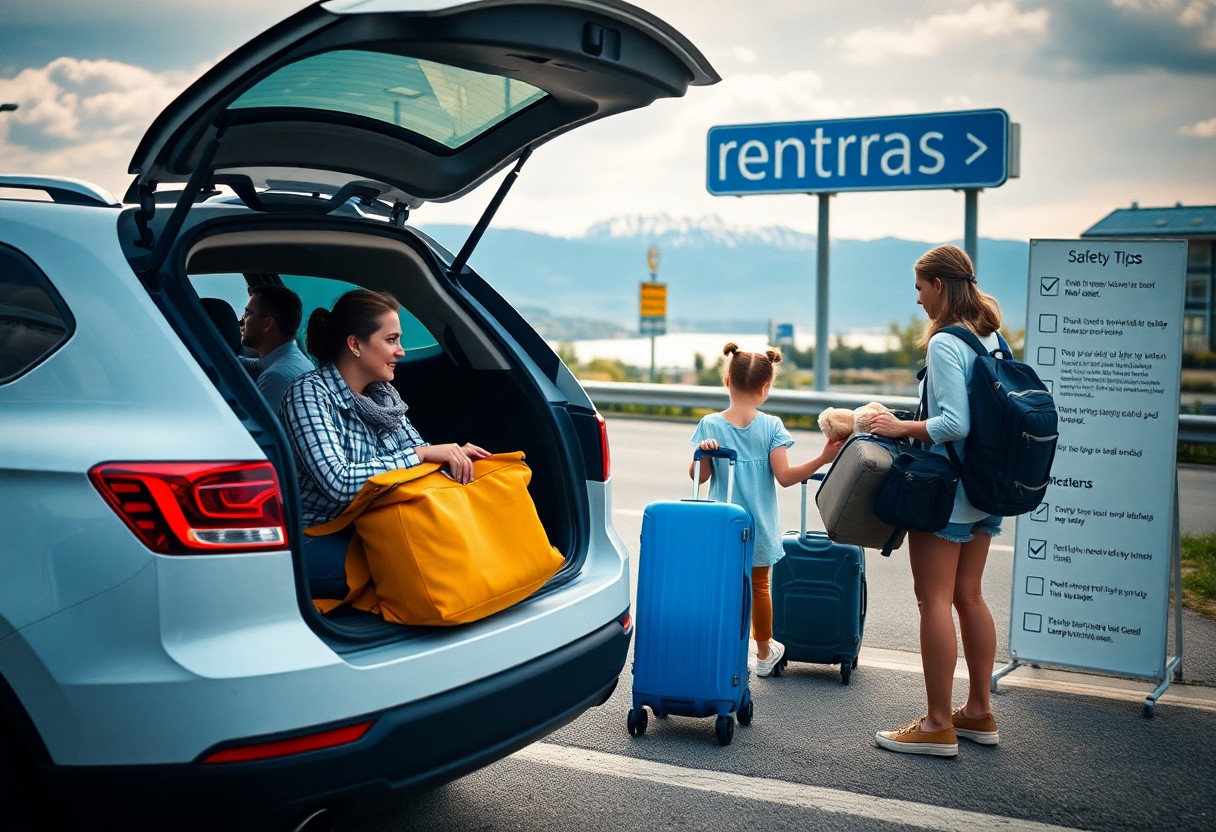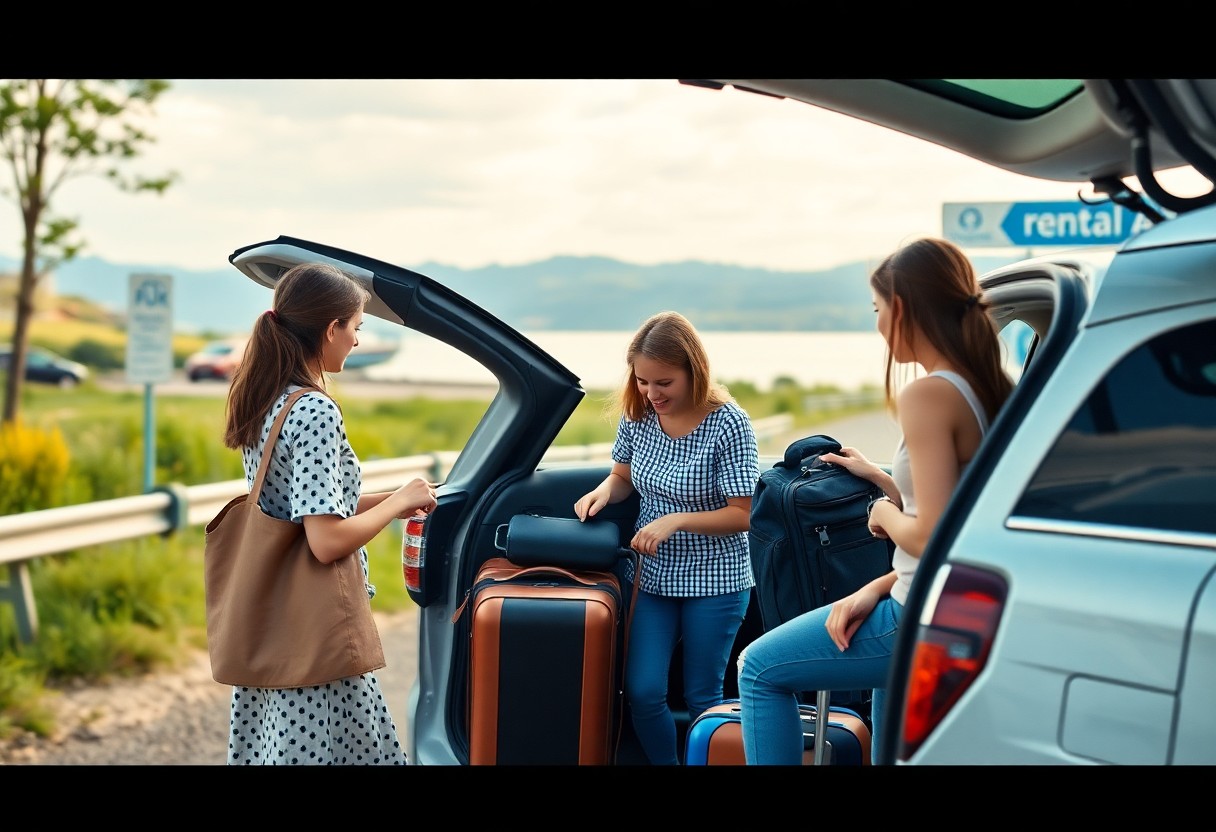Prioritizing Safety should be your top priority when planning to rent a car for your next adventure. Understanding essential safety precautions can dramatically shift your experience from one filled with anxiety to a worry-free journey. As you get ready to take control of a rental vehicle, there are several important aspects to consider that will significantly enhance your safety. Performing a thorough vehicle inspection and verifying all necessary documentation before you leave the rental lot can help avoid unexpected complications later in your journey. By equipping yourself with the right knowledge and preparation, you can ensure that your rental experience is not only smooth and enjoyable but also secure, allowing you to concentrate on creating lasting memories.
Step-by-Step Guide to Pre-Rental Preparations for a Hassle-Free Experience
Before heading to the rental counter, it’s imperative to allocate some time to thoroughly research your insurance coverage options. Your personal auto insurance policy, along with the benefits provided by your credit card, may encompass rental car coverage, potentially saving you a substantial amount on supplementary insurance expenses. Develop a detailed checklist that includes your valid driver’s license, credit card, and insurance documentation to streamline the vehicle pickup process. This preparation ensures that you have everything required and reduces potential delays, enabling you to hit the road swiftly and with complete peace of mind.
Decoding Your Rental Agreement to Prevent Unexpected Charges
It is vital to scrutinize the fine print in your rental agreement to protect yourself against surprise fees. Focus on key elements such as the fuel policy, mileage limitations, and damage assessment procedures. Knowing the terms for returning the vehicle—including the acceptable fuel levels and timing requirements—is crucial. Research indicates that a staggering 65% of rental disputes stem from misunderstandings regarding these fundamental terms, highlighting the importance of being well-informed before you drive away.
Choosing the Perfect Rental Company to Meet Your Needs
When selecting a rental car agency, it’s noteworthy that around 85% of satisfied customers attribute their positive experiences to the company’s reputation. Seek out rental agencies that showcase positive customer reviews, transparent pricing structures, and 24/7 customer support. Opting for a company with multiple locations and a diverse fleet of well-maintained vehicles will significantly enhance your overall experience. Given the varying quality standards among rental companies, it is essential to research their vehicle maintenance practices and safety records. The most reputable rental companies conduct regular safety inspections on their fleet, maintain vehicles according to manufacturer specifications, and provide roadside assistance. Confirm that these services are included in your rental agreement prior to booking.

Executing Comprehensive Vehicle Safety Checks for a Smooth Journey
Implementing some critical safety checks can be the pivotal factor between a seamless journey and potential complications while on the road. It’s essential to perform a complete inspection of the rental vehicle before driving off. According to the National Highway Traffic Safety Administration, thorough vehicle inspections can decrease accident risks by an impressive 40%. Taking the time to assess the vehicle’s condition not only provides peace of mind but also enriches your overall rental experience, ensuring you are ready for the road ahead.
Crucial Initial Inspection Points You Must Not Overlook
Employing a systematic strategy can guarantee that your rental car is fully prepared for the road. Start by evaluating the condition and pressure of the tires, testing all lights and signals, checking the responsiveness of the brakes, and examining fluid levels. These essential yet critical inspection points form the foundation of your safety while driving and should never be neglected. A thorough inspection can help you identify any potential problems before they escalate into more significant issues during your journey.
Organizing All Required Documentation Before Hitting the Road
Before embarking on your journey, it’s crucial to ensure that you have all necessary documentation in order. This includes your valid driver’s license, rental agreement, insurance papers, and vehicle registration. Being well-prepared with these documents is vital for protecting yourself in case unexpected situations arise during your trip. Car rental statistics reveal that 85% of rental-related issues stem from incomplete or missing documentation. To safeguard against any potential mishaps, it’s advisable to photograph or scan these documents as a backup. Additionally, store the rental company’s emergency contact number in your phone, and keep physical copies of all records in the glove compartment for quick emergency access.
Implementing On-Road Safety Measures for a Secure Driving Experience
Your safety should always be the primary focus when driving a rental car. It’s essential to maintain safe following distances, strictly adhere to speed limits, and avoid distractions like mobile phones while driving. According to the National Highway Traffic Safety Administration, distracted driving was responsible for 3,522 fatalities in 2021 alone, making it imperative to keep your attention firmly on the road ahead.
Getting Acquainted with Local Traffic Regulations for Your Safety
Driving regulations can vary greatly from one city to another and even between countries. It’s essential to familiarize yourself with local traffic laws, including turning restrictions, designated parking zones, and speed limits. Research shows that tourists unfamiliar with local traffic regulations are 50% more likely to be involved in accidents. Therefore, taking the time to learn the basics and staying informed about local driving practices can significantly enhance your safety during your travels.
Effective Navigation Techniques for Safe and Efficient Travel
Statistics indicate that approximately 70% of rental car accidents occur due to drivers getting lost or distracted while attempting to navigate. To mitigate this risk, it’s advisable to set up your navigation system before you begin your journey and utilize voice directions to minimize distractions while driving. Taking advantage of your rental vehicle’s built-in GPS or a reliable navigation app will help keep you on the right track. Enhancing your navigation safety can also involve preloading offline maps for areas with unreliable connectivity, marking your rental car’s parking location, and having an alternative navigation method readily available. Additionally, planning your routes during off-peak hours is beneficial, as studies have shown that accident rates are 25% lower during these periods.
Preparing for Emergencies to Ensure Safety on Your Journey
Not every trip unfolds as planned, making proper emergency preparedness essential for your safety. Your rental experience should include a solid emergency plan that outlines knowledge of local emergency services, easy access to essential documents, and a clear understanding of your rental company’s breakdown assistance procedures. Statistics reveal that 85% of car rental emergencies are handled more effectively when drivers are adequately prepared, emphasizing the necessity of having a solid plan in place.

Compiling Essential Contact Information for Emergencies
The first step in being ready for emergencies is creating a list of critical contact numbers. Your emergency contact list should include your rental company’s 24/7 assistance line, local police, roadside assistance, and the nearest medical facilities. Keeping these contacts readily accessible on your phone, as well as maintaining a physical copy in the vehicle, is crucial. Quick access to these contacts can significantly reduce emergency response times by up to 50%, facilitating effective navigation through unexpected situations.
Ensuring Your Rental Vehicle is Equipped with a Comprehensive Emergency Kit
Before you embark on your journey, it’s vital to confirm that your rental vehicle is equipped with a complete emergency kit. This should include a first-aid kit, flashlight, essential tools, warning triangles, and a high-visibility vest. Research indicates that having a well-stocked emergency kit can prevent 60% of roadside situations from escalating into serious emergencies. Familiarity with the components of your emergency kit can mean the difference between a minor inconvenience and a major crisis. Moreover, your kit should contain jumper cables, a spare tire in good condition, and essential repair tools. Data suggests that 40% of rental car incidents can be resolved with items from an emergency kit, saving you valuable time and ensuring your safety throughout your journey.
Strategic Journey Planning for a Seamless Travel Experience
Even if you’re an experienced driver, planning a journey in a rental car demands extra attention to detail. You must take into account variables such as unfamiliar roads, the handling of a different vehicle, and local traffic regulations. Statistics reveal that 73% of car accidents occur within 25 miles of home, underscoring the importance of meticulous journey planning when driving in new areas.
Mapping Effective Routes for Safe and Secure Travel
With the advancements in GPS technology, it is still prudent to download offline maps as a backup navigation method. Plan your primary route while identifying at least one alternative path to maintain flexibility. Consider factors such as road conditions, traffic patterns, and potential construction zones. Aim to avoid high-risk areas and prefer well-lit main roads, particularly when navigating during nighttime hours.
Scheduling Regular Rest Stops to Combat Driver Fatigue
It is advisable for drivers to take breaks roughly every two hours or after traveling 100 miles. Research indicates that driver fatigue contributes to 20% of road accidents. Plan your rest stops at well-maintained, populated areas along your route that offer essential services like restrooms, food, and fuel stations. When organizing your rest stops, consider peak travel times and seasonal factors that might influence traffic. Align your planned breaks with meal times and natural pauses in your journey. Additionally, it’s prudent to avoid driving between 2 AM and 6 AM, as this timeframe sees a higher incidence of fatigue-related accidents. Schedule longer breaks during these hours if your journey extends over multiple days.
Adapting to Weather and Traffic Conditions for Safe Driving Practices
Unlike driving your personal vehicle, operating a rental car in unfamiliar areas requires extra vigilance regarding weather and traffic conditions. It is essential to adjust your driving style to accommodate local weather patterns and traffic flow, especially when navigating through high-risk areas or during adverse weather conditions. Staying informed and making educated decisions based on current conditions is paramount for your safety.
Staying Informed on Weather Conditions Throughout Your Journey
In addition to checking the forecast before your trip, it is wise to monitor weather updates continuously during your journey. Download reliable weather apps that provide real-time alerts and hourly forecasts for your route. During winter months, ensure that your rental vehicle is equipped with appropriate seasonal tires, and in summer, verify that the air conditioning is operational for your comfort and safety.
Utilizing Traffic Updates for Smooth and Safe Travel
To avoid congestion, you have various tools at your disposal, including navigation apps and local traffic reports. Utilize real-time traffic monitoring apps to identify potential delays and plan alternative routes accordingly. Research shows that 40% of car accidents occur during peak traffic hours, making it essential to remain aware of traffic patterns in unfamiliar regions. Set up traffic alerts on your phone before embarking on your journey. Be mindful that morning rush hours (7-9 AM) and evening peaks (4-6 PM) typically experience the highest congestion rates. Whenever possible, plan your travel schedule to avoid these peak times, and always maintain a safe following distance in heavy traffic situations.
Creating a Roadmap for a Safe and Enjoyable Rental Experience
As a reminder, your car rental experience can be both safe and enjoyable when you take the necessary precautions. Benefit from thoroughly inspecting the vehicle before departure, understanding your rental agreement, and staying vigilant about local traffic laws. Keep emergency contacts easily accessible, plan your routes effectively, and schedule regular rest stops during long drives. Your preparation and attentiveness can significantly impact the difference between a stressful experience and a smooth journey. By adhering to these safety guidelines, you set the stage for a confident and secure adventure on the road.
Frequently Asked Questions About Car Rentals
What essential checks should I perform before driving away with a rental car?
Before departing, ensure that you conduct a comprehensive inspection of the vehicle. Document any existing damage with photographs, check tire pressure, test all lights and signals, adjust mirrors and seats, locate the spare tire, and familiarize yourself with basic controls. Reporting any issues to the rental company immediately is crucial. This documentation will protect you from being held responsible for pre-existing damage and ensure your safety throughout your trip.
How can I guarantee that I’m fully covered by insurance while renting a car?
Begin by reviewing your auto insurance policy and credit card coverage to understand your existing protections. Examine the rental company’s insurance options, including collision damage waiver (CDW), liability coverage, and personal effects coverage. If you are traveling internationally or if your current insurance has gaps, consider purchasing additional coverage. Request written confirmation of your coverage choices and keep the documentation readily accessible during your rental period.
What steps should I take if the rental car breaks down or I am involved in an accident?
First and foremost, ensure everyone’s safety and move to a secure location. If necessary, contact emergency services. Then, reach out to the rental company’s 24/7 support line—they will guide you through their established procedures. Document the incident with photos and gather information from other parties if an accident occurs. Avoid admitting fault or signing any documents without first consulting the rental company. Keep all receipts for expenses related to the breakdown or accident for potential reimbursement.
The Article: Car Rental Safety Tips: How to Ensure a Safe and Seamless Journey appeared first on https://rentacar24.org/
The Article Car Rental Safety Tips for a Smooth and Secure Trip Was Found On https://limitsofstrategy.com



I appreciate your emphasis on safety as the cornerstone of a successful car rental experience. It’s often easy to overlook these crucial preliminary steps, especially when excitement for an upcoming adventure takes over. I’ve learned through experience that conducting a thorough vehicle inspection can save you from unexpected headaches. I remember one trip where I neglected this and was faced with a flat tire just hours into the journey.
You make a crucial point about safety being paramount when renting a car. I’ve experienced firsthand how overlooking the vehicle inspection can lead to unexpected issues—on one occasion, I encountered a flat tire in the middle of a remote area. It underscored the necessity of not just inspecting the car, but also thoroughly understanding your insurance coverage before hitting the road.
Your insights on prioritizing safety in the rental car process resonate deeply with me. Having experienced a few unexpected hiccups during previous rentals, I can attest to the importance of a thorough vehicle inspection before hitting the road. I remember one trip where I neglected this step and ended up dealing with a flat tire in a remote area, which not only caused stress but also wasted valuable time that could have been spent exploring.
It’s great to see someone else who values the importance of vehicle inspections. I think many people underestimate how crucial those are until they run into a situation like yours. It’s a relatable experience—being stuck with car trouble in a remote area can definitely turn a road trip into a headache.
Your experience really highlights how crucial it is to prioritize safety in the rental car process. It’s interesting how something as simple as a vehicle inspection can have such a significant impact on our travel experiences. I’ve had a similar situation where I overlooked checking tire pressure, and it definitely put a damper on my plans for the day.
I can relate to your experience with unexpected hiccups; it’s a reminder of how important preparation is, just like the strategies I recently came across for avoiding new debt after consolidating.
‘Avoiding New Debt After Consolidation: Key Strategies to Implement’
https://yobiboy.com/avoiding-new-debt-after-consolidation-key-strategies-to-implement/.